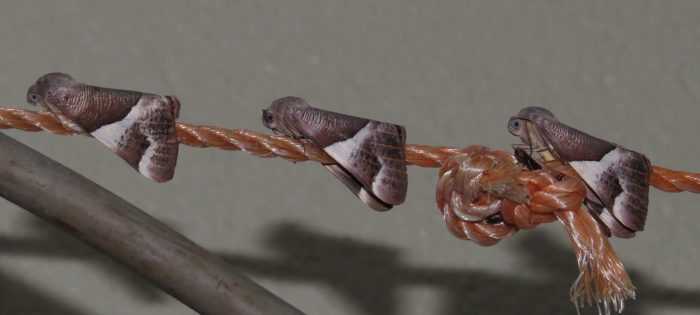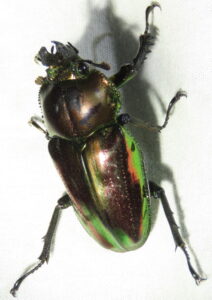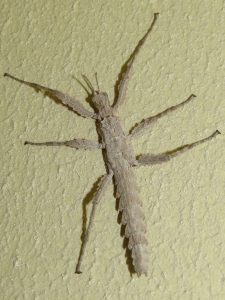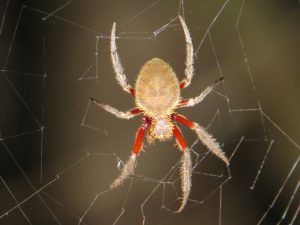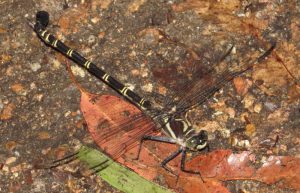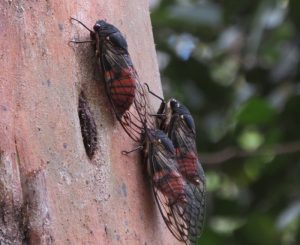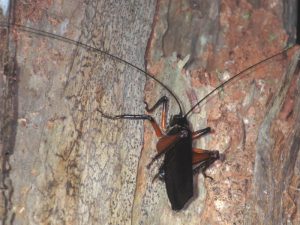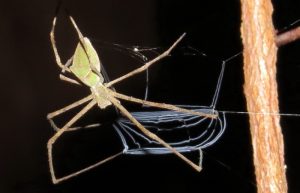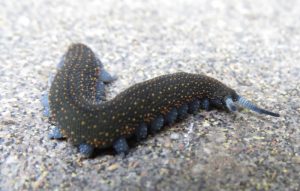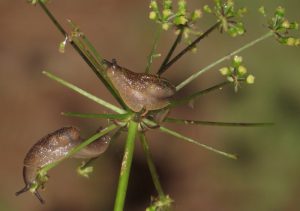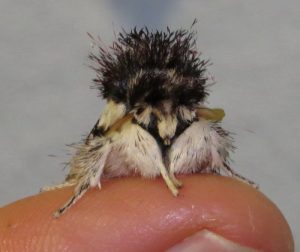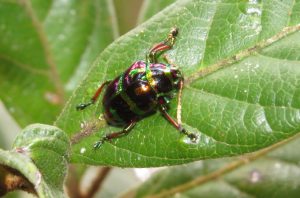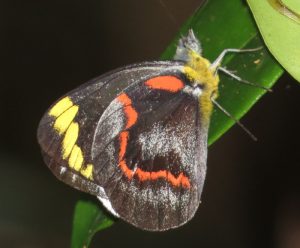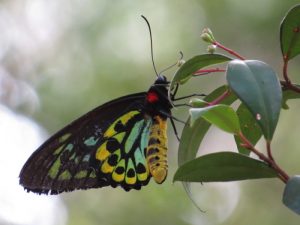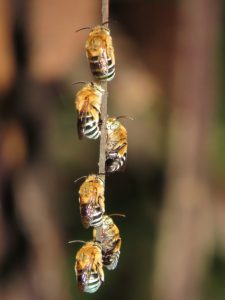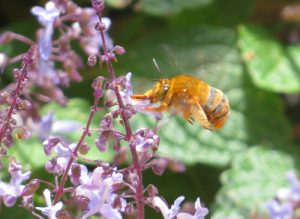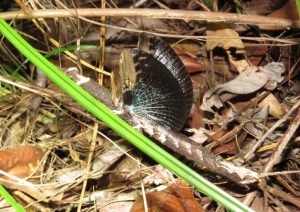Butterflies and other invertebrates
The Australian Wet Tropics are not only home to 40% of Australian birds, but also to 68% of Australian butterflies. Of the roughly 435 butterfly species, 277 are found in North Queensland.
Close to 40000 species of insects have been recorded, including many large and colourful beetles and dragonflies.
The drier savannah country to the west adds to the variety of insects.
Our tropical climate also favours increased insect sizes, therefore you can find some of the largest insects in the world here:
-the world’s largest dragonfly, the Giant Petaltail (Petalura ingentissima), with a wingspan of 160mm,
-Australia’s largest butterfly, the Cairns Birdwing (Ornithoptera euphorion). The female has a wingspan of 150mm,
-Australia’s largest moth, the Hercules Moth (Coscinocera hercules), with a wingspan of 270mm,
– the world’s heaviest cockroach, the Giant Burrowing Cockroach (Macropanesthia rhinoceros), which grows to over 80mm in lenght, weighs up to 30g and lives for up to 10 years,
-the world’s strongest beetle, the Rhinoceros Beetle (Xylotrupes ulysses), up to 60mm long, and able to lift 850 times its own body weight,
-the largest stick insects here are almost half a meter long. We have the world’s loudest cicadas, and Australia’s (and possibly the world’s) largest ant, the 36mm long Bulldog Ant.
Some of the insects, which can be observed on our property:
-a large variety of butterflies (the beautiful Regent Skippers are especially numerous from November to March) and moths (to attract the latter, we set up a MV light and a white sheet on some evenings),
–fireflies in spring and summer, emerging from the creek area and dispersing through the forest,
–Giant Petaltails cruising through the forest in summer,
-many different katydids and grasshoppers, as well as beetles and stick insects.
-several species of cicadas. The giant, aptly named, Red Roarers fortunately only have bumper adult populations every 5 to 7 years for a few weeks in early summer (they can be very noisy).
Following is a list of butterfly species, which we have identified on our property so far. We only photograph, do not capture them, thus the patchy nature of our list.
BUTTERFLY SPECIES
(observed on our property)
Generally, there are more butterflies in summer, but, unless otherwise mentioned, they fly all year). most abundant in:
Papilionidae (Swallowtails)
Macleay's Swallowtail
Graphium macleayanum
Blue Triangle
Graphium choredon
Green-spotted Triangle
Graphium agamemnon
Orchard Swallowtail
Papilio aegeus
Ambrax Swallowtail
Papilio ambrax
Fuscous Swallowtail
Papilio fuscus
Ulysses Swallowtail
Papilio ulysses
Chequered Swallowtail
Papilio demoleus
Clearwing Swallowtail
Cressida cressida
Cairns Birdwing
Ornithoptera euphorion
Hesperiidae (Skippers)
Green Awl
Hasora discolora
March 2021
Regent Skipper
Euschemon rafflesia
Sept-March
Splendid Ochre
Trapezites symmomus
Aug-April
Lilac Grass-skipper
Toxidia doubledayi
Sept-April
Spotted Sedge-skipper
Hesperilla ornata
Sept-May
Lyell's Swift
Pelopidas lyelli
Bright-orange Darter
Telicota augias
Pieridae (Whites and Yellows)
Lemon Migrant
Catopsilia pomona
No-brand Grass-yellow
Eurema brigitta
Lined Grass-yellow
Eurema laeta
Macleay's Grass-yellow
Eurema heria
Striated Pearl-white
Elodina parthia
Yellow Albatross
Appias paulina
Grey Albatross
Appias melania
Caper White
Belenois java
Caper Gull
Cepora perimale
Yellow-banded Jezebel
Delias ennia
Red-banded Jezebel
Delias mysis
Black Jezebel
Delias nigrina
Nymphalidae (Nymphs)
Hamadryad
Tellervo zoilus
Blue Tiger
Tirumala hamata
Lesser Wanderer
Danaus petilia
Monarch
Danaus plexippus
Common Crow
Euploea corinna
Yellow-eyed Plane
Neptis proslini
Bordered Rustic
Cupha prosope
Tailed Rustic
Vagrans egista
Blue Argus
Junonia orithya
Meadow Argus
Junonia villida
Varied Eggfly
Hypolimnas bolina
Blue-banded Eggfly
Hypolimnas alimena
Jezebel Nymph
Mynes geoffroyi
Leafwing
Doleschallia bisaltide
Tailed Emperor
Charaxes sempronius
Evening Brown
Melanitis leda
Orange Bush-brown
Mycalesis terminus
Dusky Knight
Ypthima arctous
Northern Sword-grass Brown (Helena Brown)
Tisiphone helena
Brown Ringlet
Hypocysta metirius
Lycaenidae (Blues)
Coral Jewel
HYpochrysops miskini
Trident Pencil-blue
Candalides margarita
Varied Dusky-blue
Candalides hyacinthinus
Large Green-banded Blue
Danis danis
Small Green-banded Blue
Psychonotis caelius
Hairy Line-blue
Erysichton lineatus
White-banded Line-blue
Nacaduba kurava
Purple Cerulean
Jamides phaseli
Orange-tipped Pea-blue
Everes lacturnus
Black-spotted Grass-blue
Famegana alsulus
You might find these websites of interest:
Eminent entomologist David Rentz has a regular blog with very detailed information about insects, and excellent macro photographs:
Alan Henderson, another local insect expert, has a minibeast website:
For moth identification:
http://amo.ala.org.au/main.php
http://lepidoptera.butterflyhouse.com.au/moths.html
For stick insects:
http://phasmida.speciesfile.org/HomePage/Phasmida/HomePage.aspx
